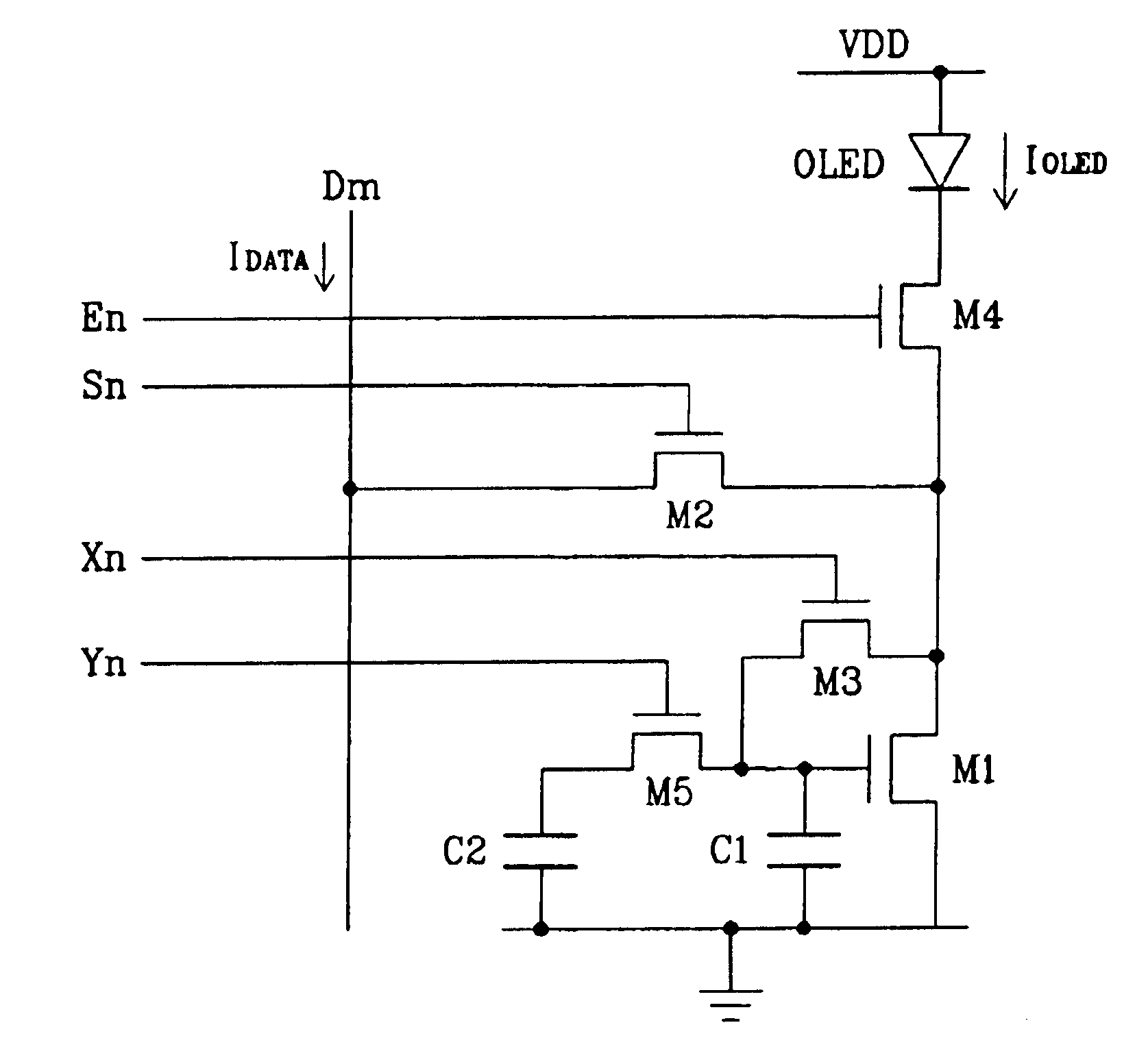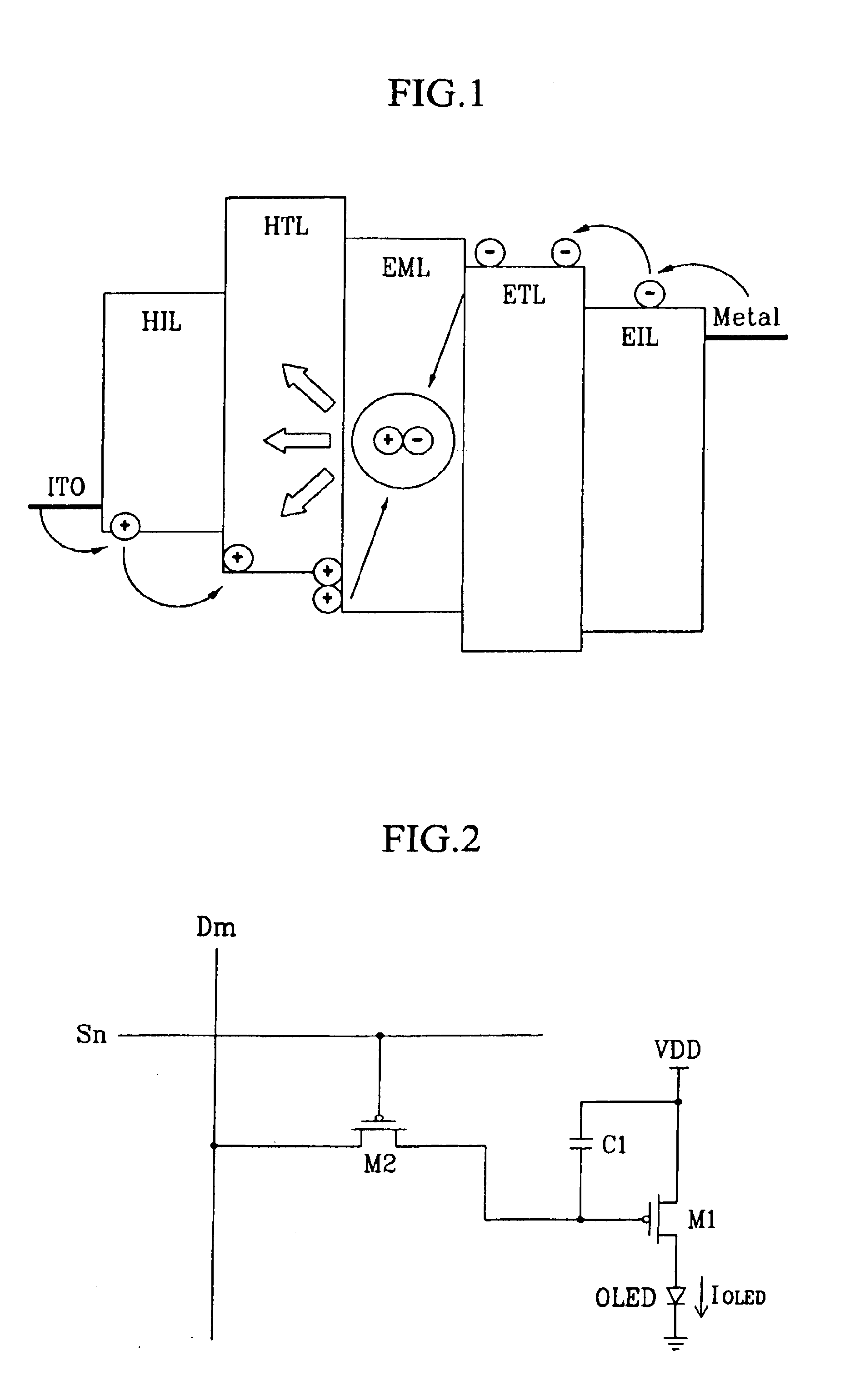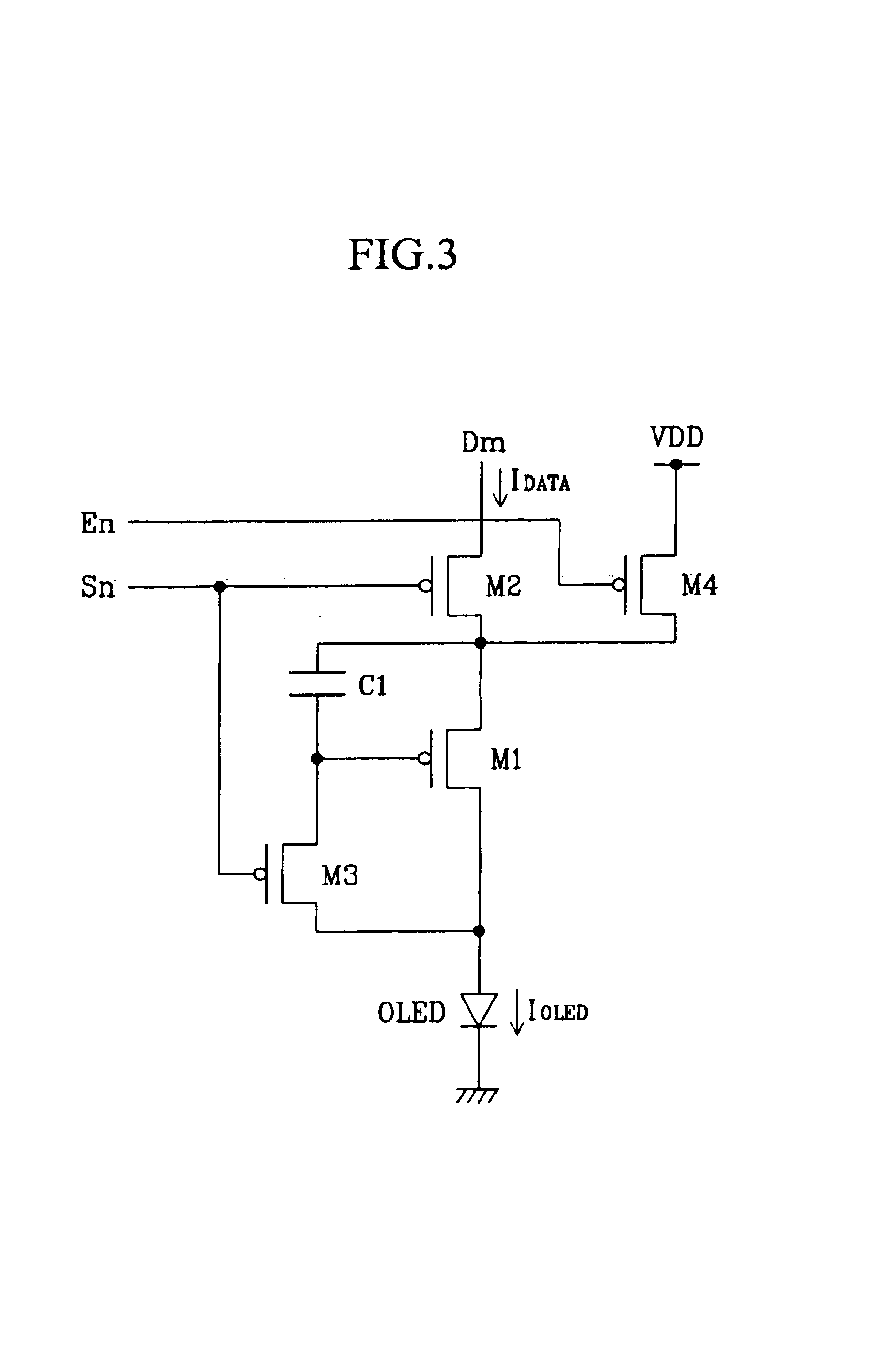Light emitting display, display panel, and driving method thereof
a technology of light-emitting display and display panel, which is applied in the direction of electroluminescent light sources, static indicating devices, instruments, etc., can solve the problems of difficult to obtain high gray, difficult to represent high gray, and difficult control of pixel circuit by fine current isub>data, etc., and achieves the effect of requiring a lot of time for charging the data lin
- Summary
- Abstract
- Description
- Claims
- Application Information
AI Technical Summary
Benefits of technology
Problems solved by technology
Method used
Image
Examples
first embodiment
[0041]Referring to FIG. 6, an operation of the pixel circuit according to the present invention will now be described in detail.
[0042]As shown, in interval T1, transistor M5 is turned on because of low-level control signal CS2n, and capacitors C1 and C2 are coupled in parallel between the gate and the source of transistor M1. Transistor M3 is turned on because of low-level control signal CS1n, transistor M1 is diode-connected, and the threshold voltage VTH of transistor M1 is stored in capacitors C1 and C2 coupled in parallel because of diode-connected transistor M1. Transistor M4 is turned off because of high-level emit signal EMn, and the current to the OLED is intercepted. That is, in interval T1, the threshold voltage VTH of transistor M1 is sampled to capacitors C1 and C2.
[0043]In interval T2, control signal CS2n becomes high level to turn off transistor M5, and select signal SEn becomes low level to turn on transistor M2. Capacitor C2 is floated while charged with voltage, bec...
second embodiment
[0048]FIG. 7 shows an equivalent circuit diagram of the pixel circuit according to the present invention, and FIG. 8 shows a driving waveform diagram for driving the pixel circuit of FIG. 7.
[0049]The pixel circuit of FIG. 7 includes NMOS transistors M1 through M5, and their coupling structure is symmetric with the pixel circuit of FIG. 5. In detail, transistor M1 has a source coupled to the reference voltage, a gate coupled to transistor M5, and transistor M3 is coupled between the gate and a drain of transistor M1. Capacitor C1 is coupled between the reference voltage and the gate of transistor M1, and capacitor C2 is coupled between the reference voltage and a first end of transistor M5. A second end of transistor M5 is coupled to the gate of transistor M1, and control signals CS1n and CS2n from scan lines Xn and Yn are respectively applied to the gates of transistors M3 and M5. Transistor M2 transmits data current IDATA from data line Dm to transistor M1 in response to select sig...
third embodiment
[0054]FIG. 9 shows an equivalent circuit diagram of the pixel circuit according to the present invention, and FIG. 10 shows a driving waveform diagram for driving the pixel circuit of FIG. 9.
[0055]As shown in FIG. 9, the pixel circuit has the same configuration as the first embodiment except for transistors M2 and M5. Transistor M2 includes an NMOS transistor, and gates of transistors M2 and M5 are coupled in common to scan line Sn. That is, transistor M5 is driven by select signal SEn from scan line Sn.
[0056]Referring to FIG. 10, in interval T1, transistors M3 and M5 are turned on because of low-level control signal CS1n and select signal SEn. Transistor M1 is diode-connected because of turned-on transistor M3, and the threshold voltage VTH at transistor M1 is stored in capacitors C1 and C2. Also, transistor M4 is turned off because of high-level emit signal EMn, and the current flow to the OLED is intercepted.
[0057]In interval T2, select signal SEn becomes high level to turn trans...
PUM
 Login to View More
Login to View More Abstract
Description
Claims
Application Information
 Login to View More
Login to View More - R&D
- Intellectual Property
- Life Sciences
- Materials
- Tech Scout
- Unparalleled Data Quality
- Higher Quality Content
- 60% Fewer Hallucinations
Browse by: Latest US Patents, China's latest patents, Technical Efficacy Thesaurus, Application Domain, Technology Topic, Popular Technical Reports.
© 2025 PatSnap. All rights reserved.Legal|Privacy policy|Modern Slavery Act Transparency Statement|Sitemap|About US| Contact US: help@patsnap.com



